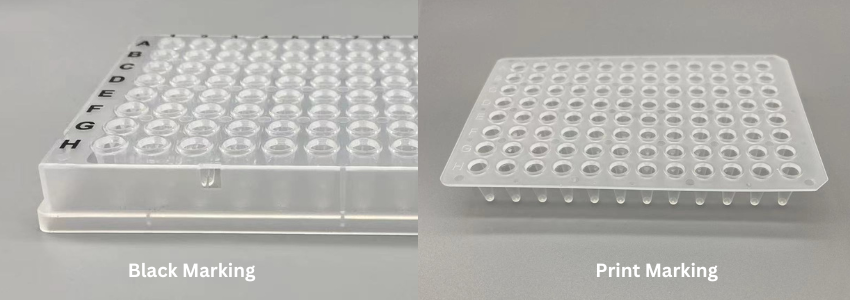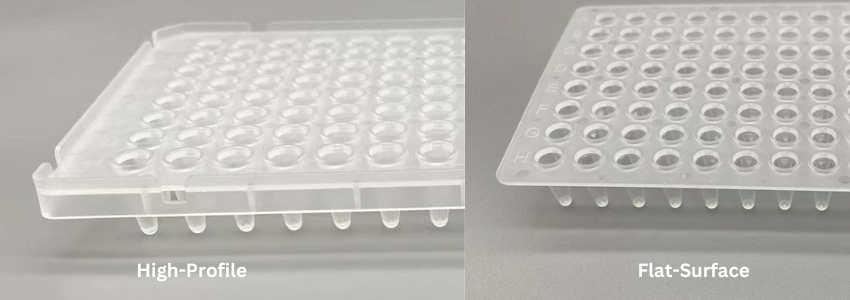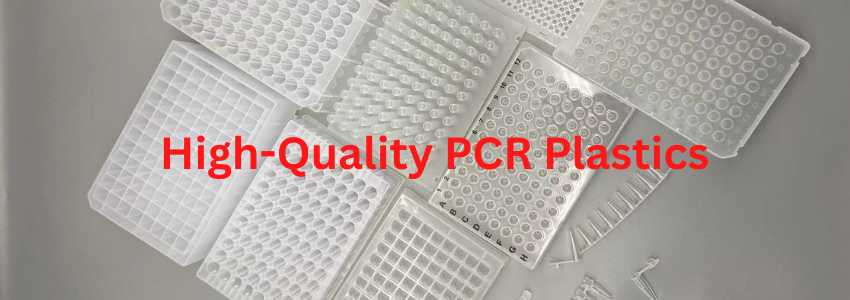When analyzing PCR results, we often focus on primer and enzyme concentrations, temperature and time, but neglect to consider PCR consumables as one of the influencing factors. The following questions can help you find the answers.


Whether it is a common PCR or a real-time quantitative fluorescence PCR (qPCR), the consumables usually come into direct contact with the reagents or samples, thus requiring high quality materials and good processing during the production and preparation process. Generally, the consumables are made of polypropylene (PP). PP is a biologically inert material that does not adhere easily to biomolecules and has good chemical resistance and temperature tolerance.

Common volumes of PCR tubes/plates are:
- Single tube / 8-link tube / 12-link tube: 0.5mL, 0.2mL, 0.1mL
- 96-well plate: 0.2mL, 0.1mL
- 384-well plate: 0.02mL
PCR tube/plate specifications:
PCR tubes are available in most volumes to meet the requirements of PCR reactions. There are standard volume and low volume options available, and low volume tubes are generally recommended. Low volume tubes/plates have a smaller overhead space, which improves thermal conductivity and reduces evaporation. At the same time, it is necessary to avoid adding too much or too little sample when adding samples. Too much can lead to reduced thermal conductivity, spillage and cross-contamination, while too little can lead to loss of sample evaporation.

When the sample volume is small, single tube or 8-tube is preferred. However, when larger reaction volumes are required, single tubes are preferred, up to 0.5 mL. Single tubes and 8-tubes are available with both flat and convex caps, each with its own advantages. Flat caps provide accurate fluorescence signal transfer for qPCR; easy to write markers. The convex cap is in contact with the PCR instrument lid, reducing pressure-induced tube deformation, etc.; however, it affects fluorescence signal transmission and cannot be used in qPCR experiments.


96-well PCR plates are generally classified as non-skirted, semi-skirted and fully skirted plates.
Non-skirted plates: Can be used with most PCR or qPCR instruments, but are not suitable for automated applications. Not very stable during pipetting and needs to be used with a plate holder.
Half-skirted plates: Can be used with labels or barcode applications, and automated applications, and have good pipetting stability.
Full-skirted plates: Ideal for automated laboratory applications and can also be used with labels and barcode applications. Good mechanical strength, suitable for PCR instruments with protruding modules, and high stability during pipetting.


No. The wall thickness of the PCR consumables should be uniform to provide consistent heat transfer. The ultra-thin tube wall is 50% thinner than the standard version, which further reduces the thermal barrier, resulting in a faster and better reaction.

Cut corners: The cut corner position of the PCR plate is selected depending on the requirements of the adapted instrument for easy positioning.
Marking: The PCR plate is marked with a numbered letter to help identify individual wells and sample locations. These are typically raised color numeric markings or imprinted markings. For some automated applications, the seal of the reaction plate is better with the imprinted markings.


There are two common types of PCR plates: flat-edge and raised-edge. Reaction plates with flat well edges can be used with most PCR instruments. Raised-edge plates allow for easy sealing of membranes and reduce the risk of cross-contamination between samples.


For common PCR reactions, you can choose transparent ones. The sensitivity and consistency of white tubes are relatively higher during real-time PCR reactions. The white tube wall prevents fluorescence from passing through the tube wall and refraction, which in turn prevents fluorescence from passing to the heating module and being absorbed by the module or inconsistent reflection, etc. A stronger, more focused fluorescence signal can be collected at the tip of the white tube compared to the clear tube.
JYBIOSCIENCE continues to supply all kinds of PCR consumables, always ensuring high quality products and efficient delivery and service. If you have any confusion or questions about the selection of PCR consumables, please contact us to get the best customized solution for your lab or to get samples for trial.

Contact: Mr.Jybio
Phone: +86 15879982901
Tel: 028-87033305
Email: info@jybioscience.com
Add: No.68 Julong Road,Wuhou District Chengdu,Sichuan,CN
We chat
